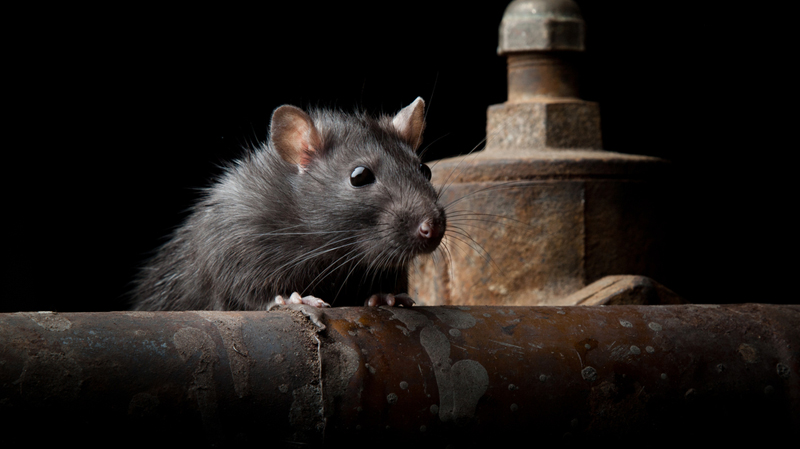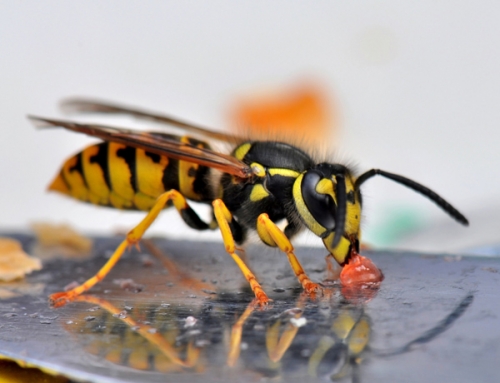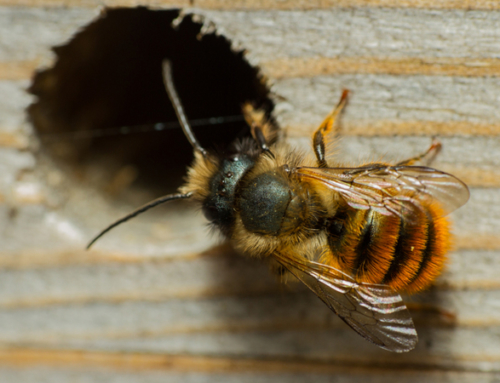An old urban myth suggests that you are never more than six feet away from a rat, but they might well be getting closer. Experts suggest that with climate change and long warm winters, a rat epidemic is approaching – others say it is already here. A group of rats is rightly called a mischief and these secretive mammals are being driven out of their habitats due to overcrowding and becoming more of a problem for householders than ever before. Generally they take up residence with humans in late autumn with the onset of winter weather.
Rattus rattus, the long tailed jet black ship rat, declined radically after the 18th Century in the UK with the introduction of its aggressive cousin the brown Rattus Norvegicus, also known as the wharf, street or sewer, rat. With a gestation period of 21 days and reaching sexual maturity within five weeks, a female rat is able to produce half a dozen litters a year – each one with up to a dozen pups. That’s potentially 70 x population growth every year!
So, how do you know if they are around? First of all, being crepuscular, these twilight rodents are most active at dawn and dusk when you are most likely to hear their scratching. If you see them in the open, the probability is you already have a significant infestation. They gnaw virtually anything – especially cables – and leave tooth marks, greasy smears from their fur, an acetamide vinegary urine smell and deposit dark brown droppings, usually in just one area, around 1cm in length, tapered at both ends. Rats have poor eyesight but are remarkably intelligent, usually choosing flight rather than fight. They are also colour blind but have superb hearing and taste. Rats are feared because they are creatures of myth and can be fierce when trapped. They also spread disease: their saliva and urine can cause viral infections and allergic reactions as well as salmonella through food contamination. Rat bites can lead to fever and the bacteria they leave in water can develop into leptospirosis.
So, what advice would benefit the householder who has these unwelcome guests in residence? An initial three step control programme is:
1. Find out where they are getting in and seal the entrances as quickly as possible.
2. Employ a professional to kill them – and don’t be squeamish about it.
3. Have the habitat decontaminated. It is then a matter of an ongoing control programme as rats have a habit of coming back.
Rats can penetrate the fabric of a property through the most ridiculously small holes. In pre 1960 houses the rodding eyes within the foul drainage system were often at fault, but any 5cm hole provides an easy access point. Therefore, the first step is to seal any holes where water, heating, overflow or drainage pipes may have been removed. The same is true with holes once formed for electric cables, telephone wires, CATV, taps, ventilation ducts, soil and vent pipes, old mechanical extractors, etc. Place wire mesh covers over any openings you need to retain.
Rats can easily get under a poorly fitted external door so adding a bristle strip to the bottom edge might well be appropriate. With cavity build, so long as rats can get through the outer skin, then climbing to the eaves presents very little problem if the cavity has not been sealed or insulated. Tree branches overhanging a property also present a perfect means of access in and out of a building, so trim them well back. Eaves gaps, holes behind mechanical appliances such as a washing machine, open valves on drainage systems, broken grates or grilles, all provide excellent doorways for the vermin. Before you fill any holes, stuff them with wire mesh or steel wool (those tough wiry round balls you might use to clean pans). Spray foam is often used to fill holes but it’s ineffective unless reinforced with a wire mesh barrier or similar.
Roof insulation presents a problem, but try to eradicate any places for them to hide – without safe and secure harbourage they will leave. Make certain there are no water leaks and that your header tank is properly sealed. Unlike mice, rats require a constant water source to survive and they like nothing better than a dripping tap. An accessible food source is another requirement, so minimise the opportunities; keep household goods such as cereals in sealed containers and any rubbish bins firmly shut. Make certain that any bird boxes or suchlike are inaccessible – rats will drive the birds away in any event. Keep piles of wood stacked well off the ground and remove vegetation close to the surround of the house. Some people believe aromatics, especially peppermint oil, will deter rats while others have had success by planting mint nearby.
An experienced rat catcher should be able to find any rat runs on your property. One method used is UV black light which traces urine sprays. To deal with rat infestations, there is a wide variety of single or multi bait boxes, spring, electronic traps and zappers although you should never underestimate just how clever rats are. Other deterrents include indoor and outdoor electromagnetic sonic devices which emit bursts of ultrasound. One of the best methods however is the very basic and highly effective sticky glue boards, though deemed to be cruel. Another age old, tried and trusted method is to have dogs and cats. Whether Cairn, Yorkshire, Jack Russell or the like, the best rat killers are undoubtedly terriers. They will stake out their territory and mark boundaries, which few rats will willingly breach. The mere smell of the feline predator may not scare rats witless in quite the same way they will with mice, but the rats will quickly vacate and find somewhere less threatening if at all possible.




